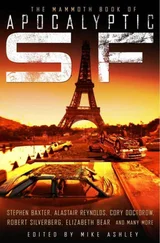Final diagnosis: Exhaustion. Odd pattern of bruising evident on patient’s skin determined to be symptom of collapse, not cause. Other physical signs bear out diagnosis — pallor, shading beneath eyes indicating lack of sleep; prominence of bones may indicate a loss of weight. Patient complained of nightmares. Calmative prescribed.
(I pray that will be the end of it.)
Appended Case Note: The enclosed documents were turned over to authorities by Kyle Walters, a librarian at St. Everild’s University, following his report of Ms. Wilton’s disappearance in January 2015. The painting described by Ms. Alam in her addition to Ms. Wilton’s notes was not among the effects in their shared residence following Ms. Wilton’s disappearance, nor was it reported as being present at the time of the initial investigation into Ms. Alam’s disappearance in November 2015.
Mr. Walters admitted to removing the documents from Ms. Wilton’s residence, but provided a sworn statement that nothing else had been removed or altered. Mr. Walters is being charged with interference in a police investigation, but at this time is not a suspect in either disappearance. Investigations are ongoing.
“Two elements of Lovecraft’s fiction that hold perennial appeal,” for Richard Gavin“are his evocations of decayed place and the inconceivably vast machinations of life that churn beneath the crust of civilization. ‘Deep Eden’ attempts to draw upon both. It speaks of an altogether other genesis.”
Gavin is a critically acclaimed author who works in horror and the primordial, often illuminating the crossroads where these realms meet. He has authored five books of macabre fiction, including At Fear’s Altar (Hippocampus Press). His esoteric writings consist of The Benighted Path (Theion Publishing), as well as essays in Starfire and Clavis: Journal of Occult Arts, Letters and Experience.
Ash Lake occasionally embodies its name. On November days such as this, when the sunbeams can scarcely press through the leaden clouds, the lake roils gray and ghostly, taking on the appearance of shifting dunes of ash; incinerated remains that somehow survived the crematorium.
How I loved days like this when I was a girl. In those distant autumns I would venture down to the lakefront, with Dad and Rita by my side. Together we would toss stones and spy for any boats daring enough to brave the gales. Those days were buoyed by a feeling, very rare and very delicious, that my sister, father, and I were the only three people left in Evendale.
Of late this same feeling has become a constant, but it has lost its succulence.
Perhaps that was the unconscious source of my desire to make the detour to the beach today: the thin hope that somehow the sight of Ash Lake in late autumn might uplift me, give me the clarity to make sense of the senselessness that is now the norm in Evendale.
I scooped up a handful of fog-moistened stones, then let them drop un-hurled. As I made my way back to the jeep I listened to the surf whose mist-hidden waves sounded much like mocking asthmatic laughter.
The fuel gauge began to flash “E” as soon as I turned the ignition, so I began to woo the vehicle, coaxing it to carry me far enough to reach the Main Street filling station that still, as of last week, had fuel.
Veering into the narrow lot, I left the engine running and ran out to test the pumps. The first two were bone-dry, but the third valve spat out unleaded. As I filled the jeep I wondered how many tankfuls were left in this town; two, possibly three? The residents of Evendale had, up until recently, kept a routine of sorts, a choreographed pantomime of a sleepy but still functioning town. A certain segment of the locals remained above to man the fueling station, to switch on houselights on a rotating basis, to plow the main roads when the snow accumulated. The concern over keeping up appearances to the outside world has waned now that everyone’s below.
My memories of this town, paled as they are, paint Evendale as little more than a tangle of poorly paved roads lined with dreary structures. But neither the years nor the miles that I set between myself and my home could account for its present condition. The houses and shops all have the air of heaped wreckage, of withered husks that no longer sheltered living things.
Most of the spaces advertise themselves as being for lease. A few of them were boarded up with slabs of cheap wood, like coffins bound for pauper’s row.
The street entrance to Venus Women’s Wear was sheathed in brown butcher paper. A sign in the display window advised potential customers that they were closed for renovation. I made my way to the alley beside the shop and found the side door unlocked.
There was no light inside the shop but I didn’t need any. My time below has sharpened my ability to see in the dark. It took me several minutes to find the dress Rita had described to me: purple silk with a dragonfly embroidered in glittering black thread over the left breast. This was the first time she had ever requested anything since going below. How I had hoped that her desire could have lured her up and out, into the light. But Rita never comes above anymore.
I zippered the dress inside a plastic garment bag with the Venus logo and the store’s address printed on the back, then I carried it back to the jeep and drove on.
Loath as I am to admit it, I now find being above rather unsettling. The airiness, the brightness, after those first few heaves of revivifying oxygen, sours quickly. More and more I want to be below. But I do not want to want that.
I turned onto Apple Road to complete my errand. In addition to the purple dress from Venus, Rita also requested that our late mother’s silver-handled mirror and hairbrush set be collected from our house.
Hypocrisy abounds: after robbing Venus I fished out the keys for my childhood home. We keep it locked up snugly, perhaps afraid to lose our past, meager though it may be.
I took the hairbrush and mirror from Rita’s dresser. Noting their condition, I rummaged around Father’s workroom until I found a can of silver polish and a soft rag. A canvas grocery sack hung from the foyer coat rack. I plucked it from its hook and filled it with a few canned goods, a jar of instant coffee, and some packets of oatmeal. I found five bottles of water left in the back of the pantry then I headed back to the mine.
The Dunford Incorporated coal mine had opened shortly after World War II, and had been Evendale’s main employer for nearly forty years before a tragic tunnel collapse took the lives of a dozen miners. Eventually, through resulting lawsuits and legal fees, it also took the life of Dunford Inc. The company declared bankruptcy and shut down the mine in 1983. It stood deserted in the arid field on Evendale’s outskirts thereafter.
I escaped Evendale in 1991, moving to the city in search of myself. At that time there were rumblings of a new company purchasing and re-opening the dormant mine, but it was not to be. After Dunford Inc. laid my father off (mercifully, a year before the collapse) he used to tell my sister and me that there was hardly any coal left in those shafts anyway. I’d always thought these words were merely a way for my father to sooth his wounded pride, but given that no one had seen fit to resume clawing at those tunnels perhaps he was speaking the truth.
Either way, the site was left to rot; its towering iron scaffolds bowing like aging men, its subterranean maze resting hushed and hollowed like some vacated netherworld.
As to the origins of the mine’s more recent and more rarefied role in the lives of the townspeople, accounts differ depending on whom you ask. That a posse had formed to rescue a child who had climbed down into the shafts on a dare and gotten lost seems to be the most common account. But the age and gender of the strayed child varies from teller to teller. A point that did run uniform through this folklore was the discovery of the emerald light.
Читать дальше












